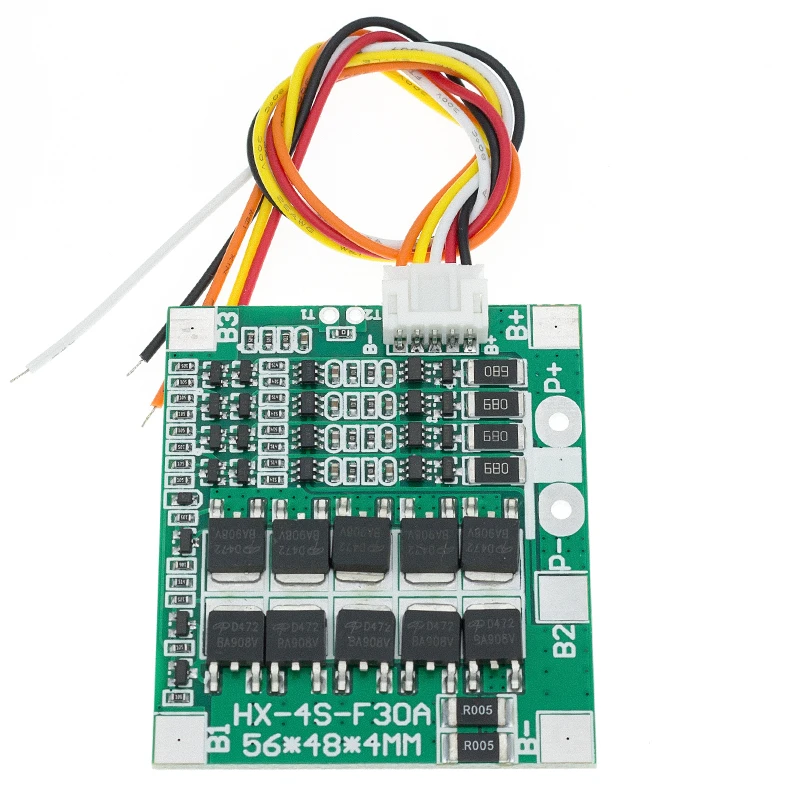nzoomed
Member
I was told to get one of these to charge a bank of 4x 21700 lithium batteries.
Its model no is cf-4s30a

 www.aliexpress.com
Now my first concern is that it says its only 14.8V, but my batteries measure 15.6V across all 4 when fully charged.
www.aliexpress.com
Now my first concern is that it says its only 14.8V, but my batteries measure 15.6V across all 4 when fully charged.
14.8V isint even enough voltage to charge the bank of batteries, so is it safe to use a higher input voltage?
Ive started wiring it up to the battery pack when I noticed that the positive and negative charge/discharge terminals directly connect to B+ and B- respectively on the board itself. In other words, I dont see how this is supposed to offer any charge or discharge protection, as there is nothing between the bank of batteries to control current going in or out across the batteries.
It appears to be just a battery balancer and not a charger itself, i doubt it even is designed to protect the batteries by the looks of it.
I want to use a 20W, 12V solar panel to provide its charging power, what kind of solar controllers are available for charging a lithium bank of 4 batteries? I cant seem to find anything suitable.
Its model no is cf-4s30a

42.91US $ 12% OFF|20pcs New Arrival 4S 30A 14.8V Li ion Lithium 18650 Battery BMS Packs PCB Protection Board Balance Integrated Circuits|Integrated Circuits| - AliExpress
Smarter Shopping, Better Living! Aliexpress.com
14.8V isint even enough voltage to charge the bank of batteries, so is it safe to use a higher input voltage?
Ive started wiring it up to the battery pack when I noticed that the positive and negative charge/discharge terminals directly connect to B+ and B- respectively on the board itself. In other words, I dont see how this is supposed to offer any charge or discharge protection, as there is nothing between the bank of batteries to control current going in or out across the batteries.
It appears to be just a battery balancer and not a charger itself, i doubt it even is designed to protect the batteries by the looks of it.
I want to use a 20W, 12V solar panel to provide its charging power, what kind of solar controllers are available for charging a lithium bank of 4 batteries? I cant seem to find anything suitable.

